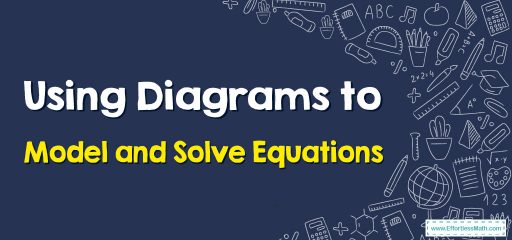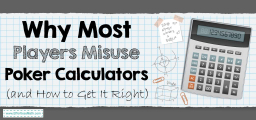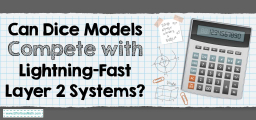Using Diagrams to Model and Solve Equations
In this article, the focus is on teaching you how to use diagrams to model and solve equations. By Using Diagrams, you can simply model and Solve Equations.

A step-by-step guide to using diagrams to model and solve equations
Modeling and solving equations using diagrams can be a visual and effective method for understanding mathematical concepts. Here is a step-by-step guide for students.
- Identify the equation: Start by writing down the equation that you want to solve. Make sure it is a simple equation that can be solved using diagrams.
- Draw a diagram: Draw a diagram that represents the equation. For example, if the equation is x + 2 = 5, you can draw a number line with 5 on one side and x + 2 on the other side.
- Label the diagram: Label the diagram with the values from the equation. For example, in the number line, you would label 5 as “5” and x + 2 as “x + 2”.
- Compare the values: Compare the values on each side of the equation and determine if they are equal. In this case, 5 and x + 2 are equal.
- Solve for the unknown: If the values are equal, then you can solve for the unknown value, in this case, x. To do this, you can subtract 2 from both sides of the equation, resulting in x + 2 – 2 = 5 – 2, which simplifies to x = 3.
- Check the solution: Finally, check the solution by plugging the value of x back into the original equation and making sure both sides of the equation are equal. In this case, x + 2 = 3 + 2, which equals 5.
By following these steps, you can use diagrams to model and solve equations visually and effectively.
Using Diagrams to Model and Solve Equations – Example 1
Graph the diagram that represents the equation, \(s-14=6\).
Solution:
The equation represents that if you have a number, s, and subtract 14 from it, it is equal to 6. Or if you have a number, s, it is equal to the sum of 6 and 14, \(s=6+14\).

Using Diagrams to Model and Solve Equations – Example 2
Graph the diagram that represents the equation, \(2f=12\).
Solution:
The equation represents that if you have a number, f, and multiply 2 by it, it is equal to 12. Or if you have a number, f, it is equal to the multiplication of 2 in f, \(2f=12\).

Related to This Article
More math articles
- 4th Grade Ohio’s State Tests Math Worksheets: FREE & Printable
- How to Solve Multi-step Addition Word Problems
- How to Find Average Rate of Change of a Function?
- The Ultimate 7th Grade NHSAS Math Course (+FREE Worksheets)
- How to Find the Central Angle of a Circle?
- Complete Guide to Foundational Vector Operations: Addition, Scaling, and More
- Ratio Tables
- Top 10 6th Grade OST Math Practice Questions
- How to Add and Subtract Polynomials Using Algebra Tiles
- What is the Best Algebra Book in the World?



























What people say about "Using Diagrams to Model and Solve Equations - Effortless Math: We Help Students Learn to LOVE Mathematics"?
No one replied yet.